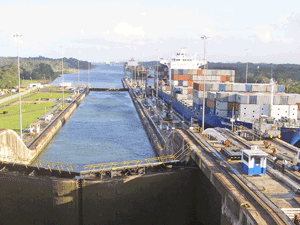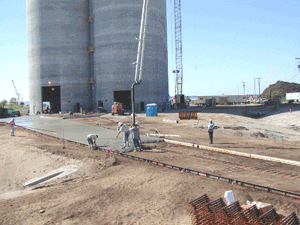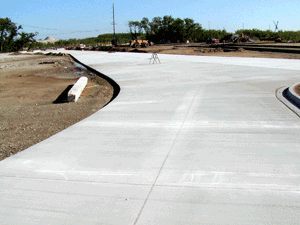Creating Less Pollution
Concrete, aside from water is the most widely used material on earth. It is a mixture of Portland Cement, aggregate, sand, possible admixtures and water. The highest energy input is required by Portland during it’s kiln baking at high temperatures. That energy input is in the form of fuel. Efforts are being made to use alternative fuels rather than oil. And there is a concerted effort to reduce that demand by 20% from 1990 to 2020 in addition to a 33.3% reduction since 1972.
Environmental Protection in Cement Manufacturing
Portland Cement Concrete Highways & Airports
Also, pollutant management is an issue the industry is making an aggressive effort to address. Cement production is responsible for approximately 1% of the contribution to greenhouse gasses. Sixty percent of CO2 is emitted by calcination during the kiln process. However, most of that is reabsorbed by the cement during its useful life and during recycling.
Green in Practice 102 – Concrete, Cement, and CO2
This effort reduces pollutants at the source, recycling into the process, energy recovery stabilizing pollutants before depositing in landfills. Despite this initial impact, cementitious products will be around for much longer than competitive materials, so while there is much room for improvement, that impact must be balanced by the lifetime of those materials. And remember, Portland Cement makes up only 9%-13% of concrete.

Concrete also helps the environment by reducing drag on tires while still providing good traction. Fuel economy increases for trucks by 11% to 20 %. That also means reduced emissions and reliance on fossil fuels, and pollution is thus also relatively reduced.
Concrete takes longer to get its strength, 28 days to substantially cure, although some newer mixes will tolerate traffic much sooner. Once hard it will never form ruts or humps, and new paving techniques with reinforcing steel welded end to end eliminates joints. This is why concrete can outlast asphalt by two or more times.
Want to see concrete that has lasted? This is a recent picture of the Panama Canal, built of concrete and steel it operates at almost full capacity day in and day out. It has done this for over 90 years.
Unlike Asphalt which relies on oil as a binder of aggregate, Portland cement depends on material of which we have a tremendous abundance.
Notice the reflectivity of cool concrete pavement in the hot sun of Tampa Florida.
Concrete when properly reinforced and placed will last for decades.

After initially setting up, concrete is cut to create control joints which control cracking.

